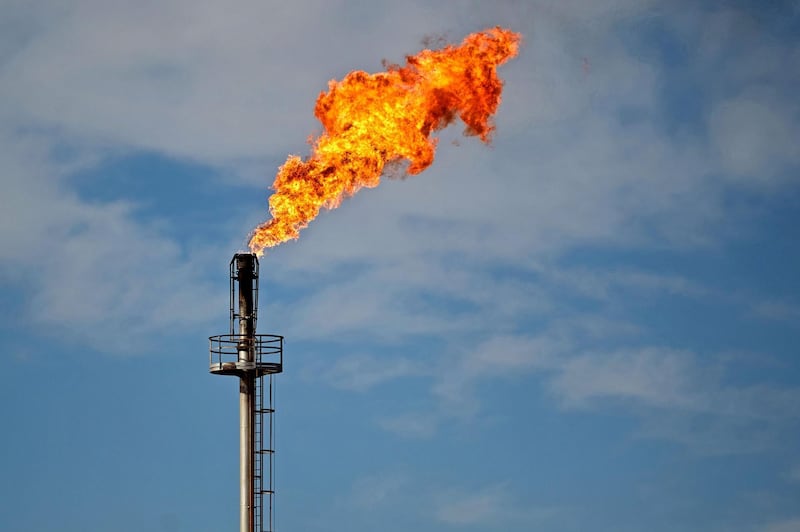This pandemic crisis is not at the beginning of the end; at best, it’s at the end of the beginning. As airlines are grounded and oil prices have their worst week for 30 years, the energy world that may emerge after the dust settles will have seven features.
They include: a likely slow and extended recovery; a thinner, consolidated oil industry; an earlier peak in oil demand; a global gas market; the historic peak in carbon dioxide emissions; political upheaval; and globalisation not halted but reshaped.
Fiscal stimulus for now is arguably like pushing wet spaghetti. Reduced interest rates, extra spending money and lower oil prices are not as effective when people are confined at home and businesses are not functioning. At best they keep people and companies solvent for a faster recovery afterwards.
That means the oil slump will be lengthy. When the crisis begins to ebb, the aftershock will ripple through the economy, while the accumulated raw materials dissipate.
How will the recovery be? Will it be like after a war, when post-bellum reconstruction drives rapid growth? Or, as the virus does not bring material destruction, will it resemble the painfully slow crawl out of the global financial crisis or great depression, with the overhang of debt and bankruptcy? Government stimuli in Europe, Japan and – depending on elections – the US will take the form of Green New Deals favouring low-carbon energy.
The oil industry will be reshaped. Despite some government efforts, such as refilling the strategic petroleum reserve, US shale firms will go bankrupt en masse. The emaciated industry that emerges will be consolidated around a few companies, mostly the super-majors with legacy non-shale and downstream assets that generate cashflow. They can afford to sit on shale resources indefinitely until prices revive.
But even super-majors will struggle through a lengthy downturn, and some will merge as in the late 1990s. The Europeans, such as Shell, BP, Total and Equinor, may wish they had built up their fledgling green energy businesses more. Without surplus oil cashflow, they face the question of how to fund their ongoing transformation.
We may not have passed the all-time peak of oil consumption, but these events will bring it forward.
The world will be far more cautious of future pandemics. Travel bans and flight cancellations, even if ineffective, will be employed quickly at the first sign of any new disease. These restrictions will prove hard to remove, as the virus threatens to resurface periodically.
Companies have grown used to teleworking and ordinary people to home deliveries. While in its 2019 energy outlook, BP saw essentially flat oil use by road vehicles to 2040, it forecast significant growth in shipping and aviation fuel. The cruiseliner industry alone, now virtually shut down, burns through some 300,000 barrels daily; planes use about 7.2 million bpd. Shorter supply chains and virtualised business may halt one of the few growing sectors of oil consumption, while being environmentally more responsible.
The crisis will hit all vehicle sales, but environmental policies and high European fuel taxes ensure lower oil prices won’t boost petrol and diesel cars much over electrics. The world’s biggest carmaker, Volkswagen, still plans to stop developing new combustion-engine cars in 2026, and to be a purely battery-car maker by 2050.
The future for gas is more promising though: growing markets but at low prices. The fall in crude prices has finally brought long-term, oil-linked contracts more into line with record low spot prices. The Asian Japan-Korea marker for liquefied natural gas is becoming a transparent, trusted and tradable price. That in turn will enable gas exporters to find willing buyers rather than being handcuffed to unattainable oil-based prices.
2019 will probably turn out to be the all-time peak of our carbon dioxide emissions. The silver lining here is that a sharp economic downturn this year will cut greenhouse gas pollution; after that, even as the economy rebounds, improved efficiency and the growing scale of low-carbon technology will take over. Emissions are not falling nearly fast enough to avoid dangerous climate change, and there is nothing to celebrate about the pandemic, but turning the carbon corner at least gives hope.
This crisis should remind western countries, particularly the US and UK, of the virtues of impartial, competent expertise in democracies. Professionalism has to trump public relations and optics. That applies too to the blustering and vapid promotion of American “energy dominance”, which will evaporate as low oil prices boil away shale oil production.
In contrast, China blundered in the early stages of the crisis, amid popular anger, but is now winning plaudits for its draconian response while the Western world appears incapable as a result of its delayed response. This could raise the worldwide reputation of Beijing's political system, and its belt-and-road initiative. But its economy will have a lot to prove.
Meanwhile, those oil-exporting states with little diversification, fragile finances and political strife face a tough future. Upheaval, even collapses, are not inevitable or necessarily immediate, but are impending. If this shock does not concentrate minds in Algiers, Baghdad or Caracas, nothing will.
The 19th Century golden age of globalisation was undone by post-First World War balkanisation. Today’s globalisation was already threatened by growing US-China rivalry, trade wars, overused sanctions, and the misleading narrative that free trade is the cause of western job losses. China-centric supply chains were being recast in the face of rising costs; the virus outbreak is a reminder of the dangers of overdependence on any one country. Manufacturing via 3D printing close to the consumer may gain in popularity.
Some believe the coronavirus means globalisation will go into retreat. More likely, new technology, connectivity and growing wealth in developing countries will keep driving it forward. However, it will be more contested and networked than Euro- or Sino-centric. The lastest great global crisis of the 21st Century has to teach us how to manage the ongoing transformation to a multipolar and hotter world.
Robin M. Mills is CEO of Qamar Energy, and author of The Myth of the Oil Crisis







